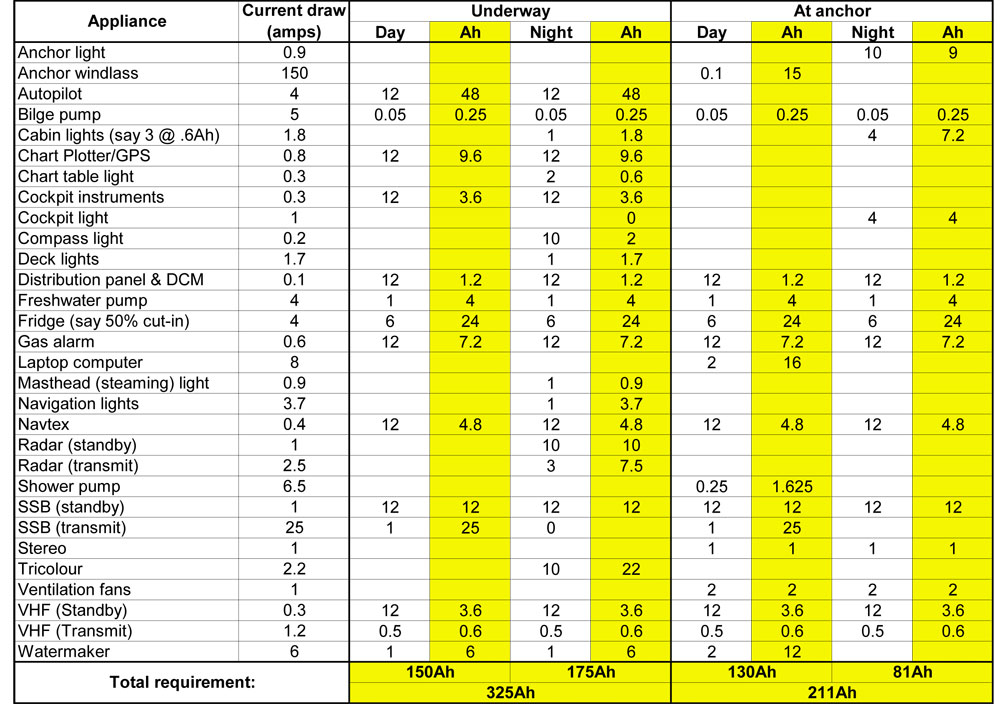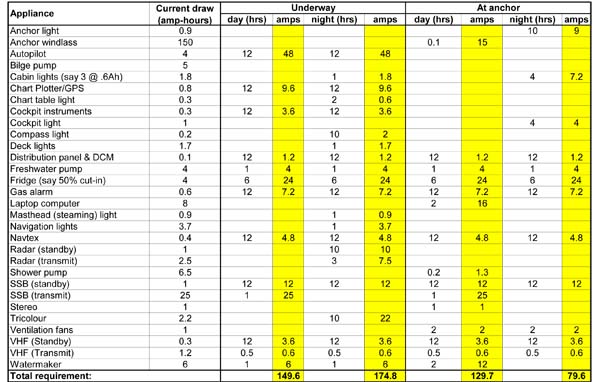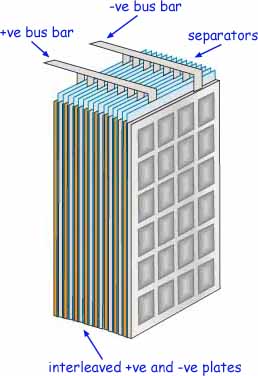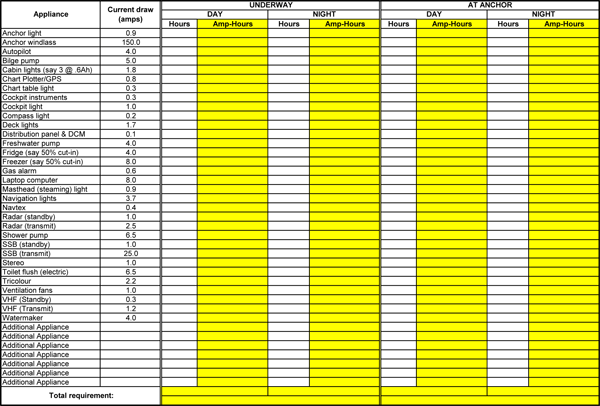- Home
- The 12v Energy Equation
- Marine Solar Panel
A Marine Solar Panel, or a
Wind Charger?
The case for fitting a marine solar panel or two on your sailboat can be overwhelming...
'Fit 'em and forget 'em' goes the sales pitch.
'Free power from the sun' claim the advertisements.
"It's a miracle" say I, fully in agreement with all except for the 'free' bit, remembering what it cost to buy two 85watt solar panels for Alacazam.
But was it money well spent?
Yes, definitely, but only because Alacazam was
cruising in the West Indies at the time, where there's no shortage of
sunshine.
In these tropical regions you can generally rely on 10 hours of it every day which means I could expect around 60A from the solar panels over this period.
Similarly, when we were cruising in the Mediterranean our marine solar panels were great contributors to the inward flow of amps.
But when we return to the UK? Sadly no. Not even in the summer months.
Here a windcharger will be much more productive - and cost effective - than a marine solar panel.
Factors Affecting the Performance of a Marine Solar Panel
A number of factors affect their performance, or from another point of view, just one - the sun:
- Angle of incidence of the sun's rays - This of course depends on season and latitude. At the equator the sun is high in the sky for much of the day, so excellent performance can be expected. In high latitudes, with the sun low in the sky, performance will be much reduced;
- Cloud cover - Less is best. No surprises there.
Rigid or Flexible?
If you siting your solar panels on a hard, level surface - a gantry for example - then rigid panels are the ones for you.
Otherwise, flexible panels are the way to go.
In either event measure up carefully are get the largest panels you can to fit the available space.
The Technology behind a Solar Panel
A photovoltaic (PV) solar cell consist of two layers of silicon-based laminates constructed as a 'semiconductor' in which one of the layers is electrically positive and the other negative. When subjected to the sun's rays, the photovoltaic activity between the two produces an electrical current.
The principle's not new, having been unearthed by the French scientist Henri Becquerel (1852 - 1908), who also won the Nobel Prize for bringing radioactivity to the world's attention.
Solar panels are made up of a number of photovoltaic cells, of which there are three main types:~
- Monocrystalline rigid panels;
- Polycrystalline rigid panels;
- Amorphous silicon flexible panels
Monocrystalline panels are constructed of small individual photovoltaic cells, and have an efficiency rating of 15%.
These will outperform polycrystalline panels which are constructed of larger PV cells and are rated at 13%.
Both types are considerably more efficient than the flexible amorphous silicon panels which are rated at a rather disappointing 6%.
But flexible panels shouldn't be discounted; after all you can fix them to a non-rigid surface - on a bimini, a curved coachroof or even around a sailcover - where you otherwise couldn't harvest any energy from the sun at all.
Clearly the larger the marine solar panel array the more energy it will harvest. A good quality monocrystalline panel will be rated by the manufacture at around 120watt per square metre.
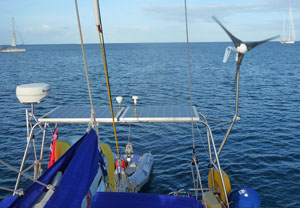 Two 85w marine solar panels and a windcharger on Alacazam's gantry...
Two 85w marine solar panels and a windcharger on Alacazam's gantry...Often you'll see rigid panels mounted on pivoting clamps that can be adjusted to be perpendicular to the sun's rays. This will clearly maximise their performance, providing they are regularly adjusted to keep pace with the sun's movement - a degree of discipline that I sadly lack, so mine stay fixed flat on the stern gantry as shown here.
Note that the radar and the windcharger are located outboard so as to reduce as far as practicable to extent of any shadows cast on the solar panels.
But there are days when the sun chooses not to put much of an appearance at all, so like most cruising sailors, our green energy set-up includes both wind and sun charging methods.
Recent Articles
-
Wauquiez Gladiateur 33 for Sale
Apr 10, 24 05:40 AM
'Kesh', my Wauquiez Gladiateur 33 is only for sale because we've decided to go for a larger sailboat. She currently berthed in Florida, USA. -
'Cabo Frio', a Catalina Morgan 43 for sale
Apr 01, 24 08:35 AM
This Catalina Morgan 43 is for sale at a very reasonable price. She offers up to 7 berths in 2 cabins + saloon. There is full 6'5" standing headroom and good ventilation throughout. -
Live Aboard Boats For Sale
Mar 30, 24 07:02 PM
Ready to live the dream? Then browsing through this listing of live aboard boats for sale might just get you on your way...
